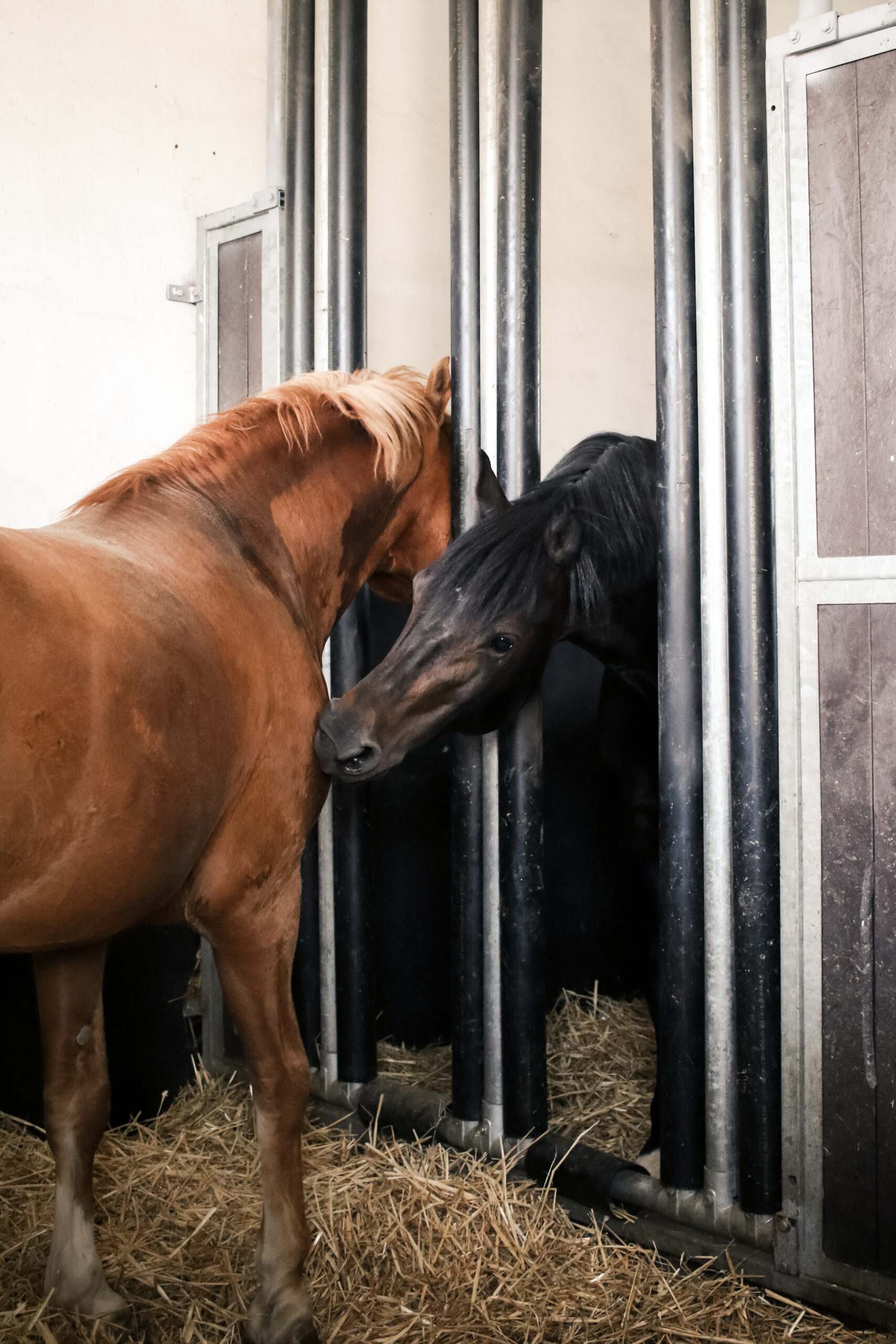[ad_1]
Life can be lonely for stallions. At most farms, they are isolated from other horses to minimize conflict and the risk of injuries. But Swiss researchers say these living arrangements cause needless stress and even suffering. And they are working to develop more humane, healthy and safe housing alternatives.
“Social contact for horses is not just ‘nice to have,’ it’s a fundamental basic need. We should understand that the possibility of interacting and maintaining affiliative relationships with other horses is vital to a stallion’s well-being,” says Anja Zollinger with Agroscope, the research division of the Swiss National Stud Farm in Avenches. “Isolation and lack of social interaction cause stress. And we know the consequences of chronic stress and distress. These include behavioral problems such a stereotypies, aggressivity, self- mutilation such as flank- biting in stallions, depression, anxiety, weakened immune systems and probably other health problems well known in humans.”
Isolation is unhealthy

Although isolation is unhealthy for any horse, it can be particularly damaging for stallions, says Zollinger. “They have much more lively and extroverted social interactions than do the other sexes,” she explains. “Their ritual interactions are lively and noisy.”
What’s more, she says, our responses to their natural behaviors can exacerbate potential problems. “Often it’s a vicious circle—stallions are isolated from a very young age so they didn’t learn to interact normally with other horses. Then they become even more isolated because they overreact when they come into contact with other horses.”
Introducing the Social Box
To address these pitfalls, the researchers developed the Social Box, a stall system that keeps stallions separated with floor-to-ceiling bars instead of walls. Three of the bars are spaced far enough apart to allow a horse to easily slip his head and a foreleg through. This which allows stallions to engage in natural social behaviors without risk of injury.
“The bars of the Social Box go all the way to the floor with that wider spacing, and that’s exactly what prevents injuries,” explains Zollinger. “Stallions are pawing, squealing and rearing a lot when they are interacting. That’s totally normal behavior for stallions. It’s ritual and not intended to cause harm. With this design of the partition, they can paw through that wide spacing. They can easily place one leg into their neighbor’s box stall without getting stuck.”
Promising results
To evaluate the efficacy of this new design, the researchers kept eight pairs of stallions in adjacent Social Boxes and conventional stalls for 20 days. Ceiling-to-floor-length bars separated the horses in the Social Boxes. The bars had two openings wide enough for a head or leg to slip through. In the box stalls, the walls were solid to chest height and topped with narrowly spaced bars extending to the ceiling.
During the final two days of stabling in each design, the researchers took video of the horses for a 24-hour period. They then reviewed the tapes and noted the frequency and nature of interactions between the horses in both settings. The stallions in Social Boxes spent significantly more time each day (51 minutes) interacting with each other than did those living in conventional box stalls (5 minutes).
Overall, the researchers deemed 71 percent of the interactions positive. They report that no horses sustained significant injuries over the entire study period.
Housing that is “more natural”
This experiment was not designed to determine whether the stallions were “happier” in the Social Boxes, but Zollinger says their behaviors were more natural, indicating improved welfare.
“We did not study the change in the stallions’ moods during and after their stay in a Social Box. I can’t say for sure that they were happier or not. Nevertheless, the Social Box enabled them to express more social behaviors and for a longer period. Social contact is a fundamental need for horses, we can call it an ‘ethological need.’ So having the opportunity to fulfill a fundamental basic need is bound to be an improvement for the horse.”
Reference: “Social Box: A new housing system increases social interactions among stallions,” Animals, April 2023
[ad_2]
Source link
